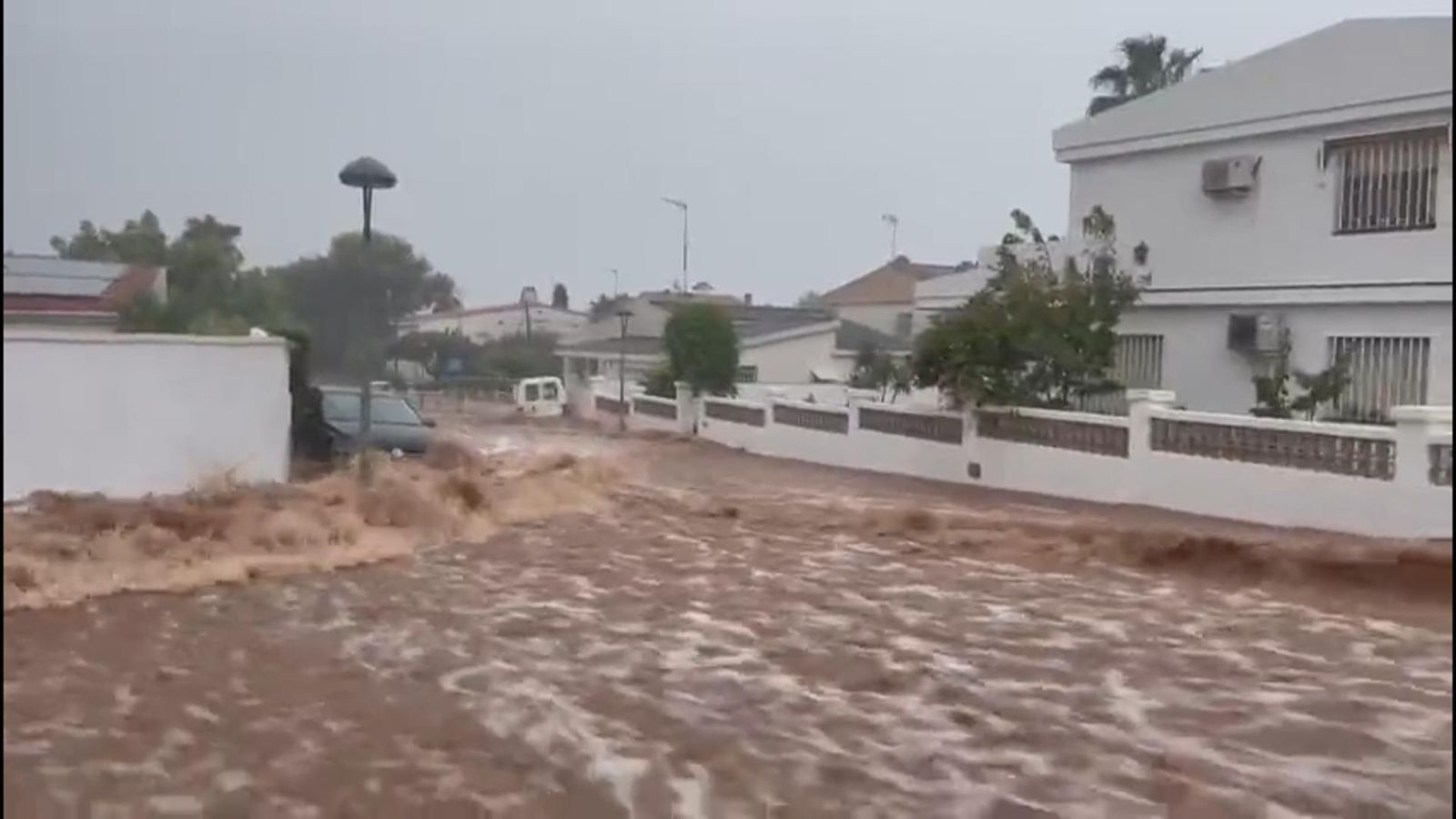Flood Warnings And Flash Floods: Your Guide To Safety And Preparedness

Table of Contents
Understanding Flood Warnings and Flash Flood Watches/Warnings
Knowing the difference between a flood watch, warning, and advisory is crucial for effective preparedness. A flood watch means conditions are favorable for flooding; be prepared. A flood warning indicates flooding is occurring or is imminent; take action immediately. A flood advisory signifies less severe flooding is occurring or expected.
Flash floods, characterized by a rapid and sudden rise in water levels, pose a particularly significant threat. They can occur in a matter of minutes, leaving little time for escape. These often originate from intense rainfall, dam failures, or levee breaches. Flood warnings for these events are issued by the National Weather Service (NWS) and local authorities, leveraging data from weather radar, river gauges, and rainfall reports.
- Receive warnings through:
- Reputable weather apps (e.g., AccuWeather, The Weather Channel)
- NOAA Weather Radio alerts
- Local news broadcasts and websites
- Immediate action is paramount: Never underestimate the power of a flood warning; heed all warnings promptly.
- Check weather alerts regularly at:
Creating a Family Emergency Plan for Floods
A pre-flood plan is your first line of defense against the chaos of a flood. This plan should include designated evacuation routes and multiple meeting points – both near your home and further afield. Identify safe locations on higher ground or in sturdy, flood-resistant buildings.
- Essential supplies checklist:
- At least one gallon of water per person per day for several days
- Non-perishable food items
- Medications (prescription and over-the-counter)
- First-aid kit
- Flashlights and extra batteries
- Important documents (stored in waterproof containers)
- Communication protocols: Establish emergency contact information and a designated meeting point outside your flood-prone area.
- Pet preparedness: Include plans for your pets, ensuring their safety and evacuation with your family.
- Securing your property: Move valuable items to upper floors, disconnect electrical appliances, and consider sandbagging to protect vulnerable areas.
Protecting Your Home from Flood Damage
Taking preventative measures significantly reduces the risk of flood damage. Investing in flood insurance provides financial security against significant losses.
- Before a flood:
- Elevate electrical systems and appliances to prevent water damage.
- Install watertight doors and windows.
- Create barriers (e.g., berms, retaining walls) to divert water away from your home.
- During a flood: If time allows, move valuables to higher ground, and consider evacuating.
- After a flood:
- Avoid floodwaters – they can be contaminated.
- Contact your insurance company.
- Thoroughly dry and clean your home to prevent mold growth. This might require professional remediation services.
Staying Safe During a Flash Flood
Flash floods represent an extreme danger, demanding immediate action. Evacuation is critical when a flash flood warning is issued.
- Driving safety:
- Never drive or walk through floodwaters – even shallow water can sweep vehicles away.
- Avoid areas prone to flooding, such as low-lying areas and bridges.
- Immediate action:
- Seek higher ground immediately.
- Be aware of debris and fast-moving water, which can cause serious injury.
- Listen for instructions from emergency services and local authorities.
Conclusion
Understanding flood warnings and flash floods, developing a comprehensive family emergency plan, and implementing protective measures for your home are essential for minimizing risk. Be prepared for flood warnings by regularly checking weather reports, creating a detailed emergency plan, and taking steps to protect your property. Develop your flash flood safety plan today and stay safe during flood season by taking these precautions. Proactive preparation significantly reduces the impact of flooding, ensuring your safety and peace of mind. Remember, preparedness is your best defense against the destructive power of floods.

Featured Posts
-
 The Hells Angels A Deep Dive Into Their History And Culture
May 26, 2025
The Hells Angels A Deep Dive Into Their History And Culture
May 26, 2025 -
 Myrtle Beach Officer Involved Shooting 12 Victims Sled Leads Investigation
May 26, 2025
Myrtle Beach Officer Involved Shooting 12 Victims Sled Leads Investigation
May 26, 2025 -
 Understanding The Dynamics Of The F1 Drivers Press Conference
May 26, 2025
Understanding The Dynamics Of The F1 Drivers Press Conference
May 26, 2025 -
 Understanding The I O Io Debate Google And Open Ais Rivalry
May 26, 2025
Understanding The I O Io Debate Google And Open Ais Rivalry
May 26, 2025 -
 A Hat Trick For The Ages Van Der Poels Paris Roubaix Reign
May 26, 2025
A Hat Trick For The Ages Van Der Poels Paris Roubaix Reign
May 26, 2025
Latest Posts
-
 Euro Millions Live Record E245m Jackpot Friday Draw
May 28, 2025
Euro Millions Live Record E245m Jackpot Friday Draw
May 28, 2025 -
 Follow The E245m Euro Millions Jackpot Draw Live This Friday
May 28, 2025
Follow The E245m Euro Millions Jackpot Draw Live This Friday
May 28, 2025 -
 Fridays Euro Millions Draw E245 Million Jackpot Live Updates
May 28, 2025
Fridays Euro Millions Draw E245 Million Jackpot Live Updates
May 28, 2025 -
 Euro Millions Friday Draw Follow The E245m Jackpot Live
May 28, 2025
Euro Millions Friday Draw Follow The E245m Jackpot Live
May 28, 2025 -
 Live Euro Millions Draw E245 Million Jackpot Up For Grabs This Friday
May 28, 2025
Live Euro Millions Draw E245 Million Jackpot Up For Grabs This Friday
May 28, 2025
